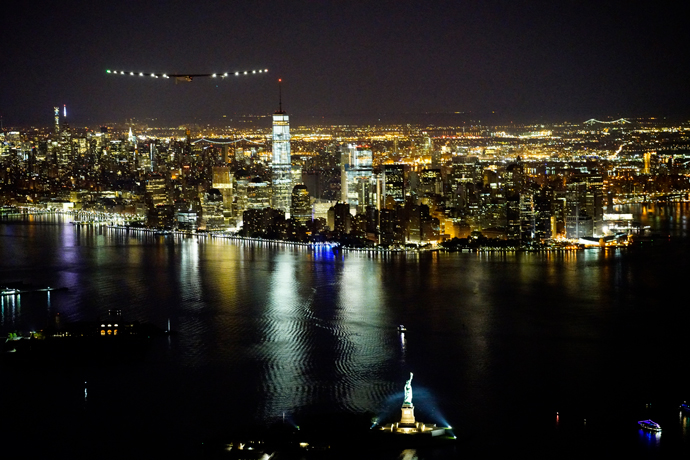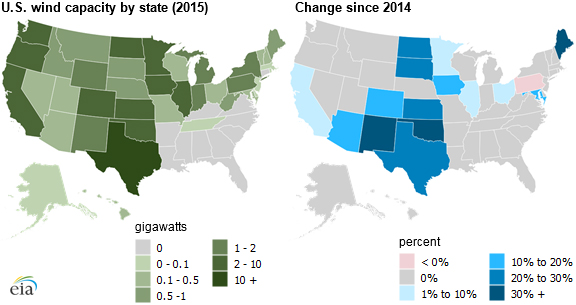The evidence is mounting: Not only are more regions making more use of more renewable energy than ever, they are finding the cost is manageable — even before factoring in the cost to the future of doing nothing.
Reports and findings have been pouring forth since the beginning of the year:
The counter-intuitive leadership of China — whose need to clear its polluted skies is among the most visibly urgent on the planet — was reinforced by an MIT study released in June that says wind power could provide 26 percent of China’s projected electricity demand by 2030, up from 3 percent in 2015. “Such a change would be a substantial gain in the global transition to renewable energy, since China produces the most total greenhouse gas emissions of any country in the world,” said an MIT release.
There’s even more counter-intuition in the study, which suggests China should not necessarily build more wind power in its windiest areas, but in areas where they can be more easily integrated into the operations of its existing electricity grid.
Coal-fired power plants accounted for over 70 percent of electricity generated in 2015 in China, which has pledged to have 20 percent of its energy consumption come from non-fossil fuel sources by the year 2030, as part of the Paris climate agreement of 2015. To achieve that goal, say the MIT report’s authors, energy policy and market reforms will need to continue in parallel with solving grid integration challenges.

That transition was acknowledged in March by what some would call another unlikely source of renewables leadership: Shell Oil. In a conversation on the University of Pennsylvania’s Knowledge@Wharton show, Shell Oil Co. President Marvin Odum said, “Shell recognizes that the world is in an energy transition — away from a focus on fossil fuels to a mix that places increased emphasis on renewable energy sources, electricity storage and possibly the use of hydrogen.” Acknowledging that Shell itself has a wind business, a solar business and a potential hydrogen business, he added, “That transition is much more difficult than most people think it is, especially because of the scale of the energy system and the trillions and trillions of dollars that have gone into developing that system … there is a real need to understand the complexity of the energy system overall.”
It’s Always Sunny in the UAE
In Dubai, an area that averages 300 sunny days per year, GE inverters have been crucial to the successful and affordable launch of Phase 1 of the Mohammed bin Rasheed Al Maktoum Solar Park. When the three-phase power plant is complete in 2030, it will provide up to 5,000 megawatts (MW) to the UAE.
According to GE and published reports, bids on provision of solar power from the project’s second phase came in in 2014 at less than 6 cents per kilowatt-hour, and have since fallen to below 3 cents — lower than the cost to generate power from fossil fuels in the oil and gas-rich region.
It was from nearby Abu Dhabi that the solar-powered aircraft Solar Impulse took off on a round-the-world flight in March 2015. At press time, after a wintertime delay in Hawaii due to an overheated battery, the aircraft was approaching the conclusion of a four-day transatlantic flight from New York City to Seville, Spain.
“It’s not a question of technology anymore, it’s only a question of mindset,” said André Borschberg, CEO, co-founder and pilot. “Solar Impulse is like a flying smart grid, and if we can make it work in an airplane, where we can’t cheat, we can make it work on the ground, in our cities, for our homes and for all applications.”

During that flight to Seville, Solar Impulse joined in announcing the formation of the new International Committee of Clean Technologies NGO in order to bring independent and credible guidance on energy policy to governments and corporations.
This spring also saw the publication of the Renewables 2016 Global Status Report by REN21, which reported that renewables generating capacity saw its largest increase ever, with an estimated 147 gigawatts (GW) added. Modern renewable heat capacity also continued to rise, and renewables use expanded in the transport sector. “Distributed renewable energy is advancing rapidly to close the gap between the energy haves and have-nots,” said the report. “These results were driven by several factors. First and foremost, renewables are now cost-competitive with fossil fuels in many markets. In addition, government leadership continues to play a key role in driving the growth of renewables, particularly wind and solar, in the power sector. As of early 2016, 173 countries had renewable energy targets in place and 146 countries had support policies.”
Among the highlights, 2015 was a record year not only for new installations, but also for investment — reaching US$286 billion worldwide in renewable power and fuels; if investment in large hydropower (>50 MW) and in heating and cooling is taken into account, the total is far higher. But challenges remain, including more focus needed on transport and on the routes those transport vehicles use.
“The renewables train is barreling down the tracks, but it’s running on 20th century infrastructure,” said Arthouros Zervos, Chair of REN21. “To accelerate the transition to a healthier, more-secure and climate-safe future, we need to build the equivalent of a high-speed rail network — a smarter, more flexible system that maximizes the use of variable sources of renewable energy, and accommodates decentralized and community-based generation.”
The Job Creators
More than 8.1 million people worldwide are now employed by the renewable energy industry — a five percent increase from last year — according to a report released in May by the International Renewable Energy Agency (IRENA). Add in large hydropower and you can tally another 1.3 million direct jobs.
In the US, renewable energy jobs increased 6 percent while employment in oil and gas decreased 18 percent. In China, renewable energy employed 3.5 million people, while oil and gas employed 2.6 million. The solar photovoltaic (PV) sector remains the largest renewable energy employer worldwide with 2.8 million jobs (up from 2.5 million at last count) with jobs in manufacturing, installation and operations & maintenance. Liquid biofuels was the second largest global employer with 1.7 million jobs, followed by wind power, which grew 5 percent to reach 1.1 million global jobs. Among other findings:
- Strong wind installation rates in China, the United States and Germany drove a 5 percent increase in global employment, with wind employment in the US alone rising by 21 percent.
- With more than a third of the global renewable energy capacity additions in 2015, China led employment with 3.5 million jobs.
- Germany remains the highest European Union renewables employer — employing nearly as many as France, the United Kingdom, and Italy combined.
- In India, solar and wind markets have seen substantial activity, as the ambitious renewable energy targets are translated into concrete policy frameworks. Africa has also seen many interesting developments leading to job creation, including solar and wind development in Egypt, Morocco, Kenya and South Africa.

“IRENA’s research estimates that doubling the share of renewable energy in the global energy mix by 2030 — enough to meet global climate and development targets — would result in more than 24 million jobs worldwide,” said IRENA Director-General Adnan Z. Amin.
Global Trends in Renewable Energy Investment 2016, the 10th edition of the UN Environment Program’s (UNEP’s) annual publication, released in March by the Frankfurt School-UNEP Collaborating Centre for Climate & Sustainable Energy Finance and Bloomberg New Energy Finance (BNEF), says the annual global investment in new renewables capacity, at $266 billion, was more than double the estimated $130 billion invested in coal and gas power stations in 2015. All investments in renewables, including early-stage technology and R&D development, totaled $286 billion in 2015, some 3 percent higher than the previous record in 2011 (unadjusted for inflation). The 134 gigawatts (GW) of renewable power added worldwide in 2015 compares to 106GW in 2014 and 87GW in 2013.
More or Less Attractive
European markets slipped down EY’s Renewable Energy Country Attractiveness Index (RECAI) rankings while less mature markets across Latin America, Africa and Asia continued their ascent, the latest edition of the report revealed in May. The US (1), China (2) and India (3) held their positions at the top of the index. Chile (4), Brazil (6) and Mexico (7) climbed higher in the index top 10, while Germany (5) and France (8) fell in the latest ranking.

“Emerging markets are transforming their energy industries at an unprecedented pace,” said Ben Warren, EY’s Global Power & Utilities Corporate Finance leader and RECAI chief editor. “Last year, renewable energy investments in the developing world overtook those in the developed world for the first time. Latin America, in particular, has become something of a litmus test for how quickly markets can grow,” driven in part by such policies as open competition in Chile and recent power auctions in Mexico under a new liberalized energy market. Argentina was the highest-scoring new entrant, coming in 18th thanks to the rollout of an ambitious renewables program under a new pro-market government.
“Markets earlier in their renewables journey are benefiting from cheaper and more efficient technologies, lower cost of capital and more reliable resource forecasting,” said Warren. “The increasingly global flow of capital proves that investors are becoming more comfortable with new markets. We can expect to see massive deployment of low-carbon investment in developing markets. Yet, ambitious targets and low pricing alone will not be enough to promise investment attractiveness. The ability of markets to climb or stay in will depend on projects being built, and commercial viability enabling the supply of affordable energy in a competitive environment.”


